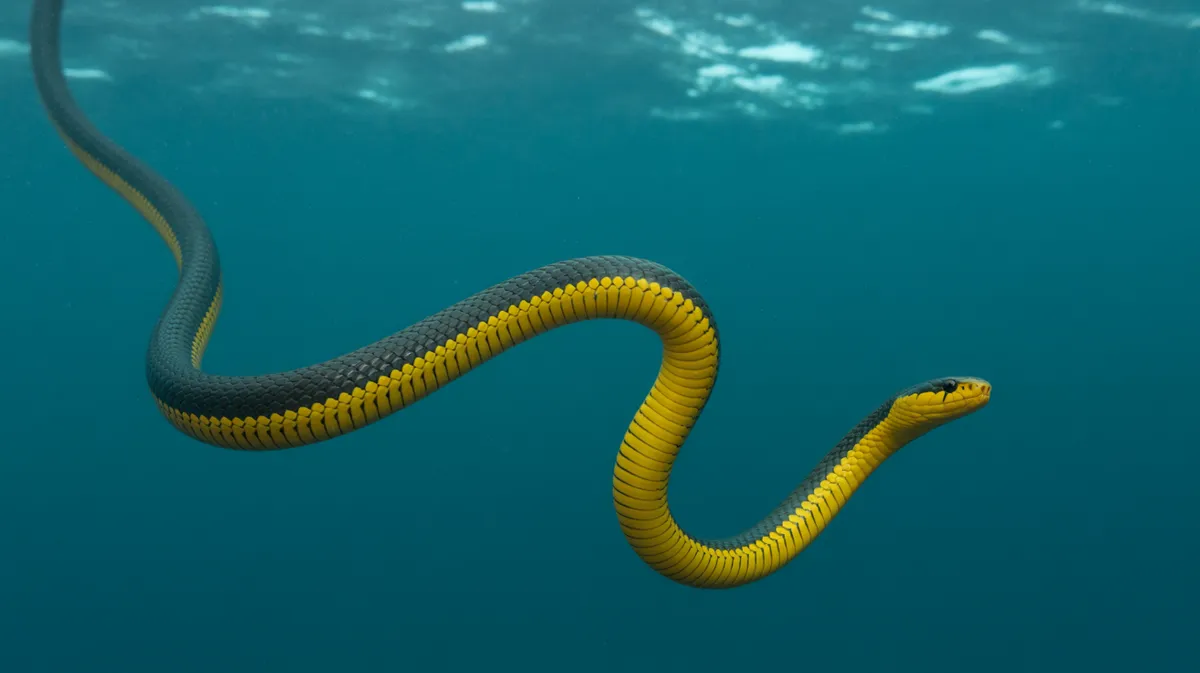
Yellow-bellied Sea Snake
Hydrophis platurus
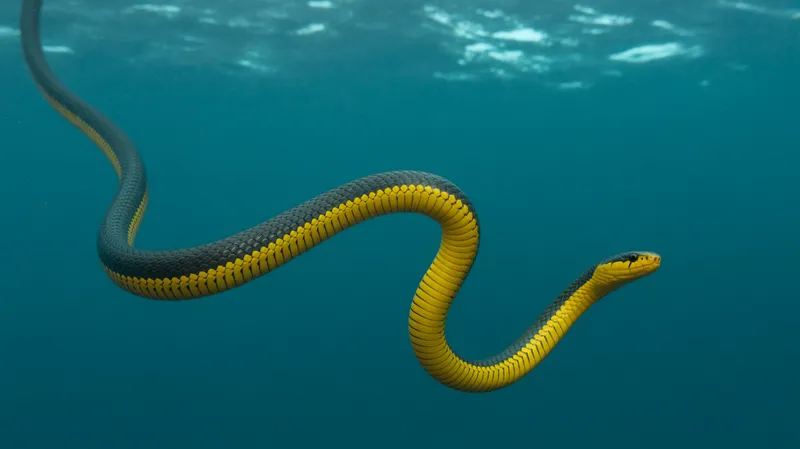
Meet the Yellow-bellied Sea Snake
The Yellow-bellied Sea Snake is a highly venomous marine reptile recognized by its striking black upper body and vibrant yellow belly. Adapted exclusively to life in the open ocean, it is one of the few sea snakes found in pelagic environments, often floating on the surface or drifting with ocean currents. This species has a flattened tail that functions like a paddle, aiding its swimming, and can remain submerged for several hours. Although its venom is potent, the snake is generally not aggressive towards humans and poses little risk due to its remote habitat.
Classification
Reptile
Habitat
Open ocean (pelagic zones)
Diet
Carnivore
Lifespan
5-10 years
Conservation
Least Concern
Weight
80-160 grams
📖Fascinating Facts
True Oceanic Life
This species is one of the few snakes that lives its entire life in the open sea, rarely coming close to shore except when washed in by storms.
Rainwater Drinker
Yellow-bellied Sea Snakes cannot drink seawater; instead, they survive by drinking fresh rainwater that pools temporarily on the ocean surface.
Highly Venomous
Their venom is extremely potent and used to quickly immobilize small fish, their primary prey.
📋Detailed Description
The Yellow-bellied Sea Snake (Hydrophis platurus) is a slender, highly aquatic elapid, typically measuring 60–80 cm in length, with some individuals reaching up to 1.1 meters. Its distinctive coloration features a sharply demarcated black or dark brown dorsal surface and a bright yellow ventral side, which serves as aposematic (warning) coloration against predators. The head is small and narrow, with nostrils positioned dorsally and equipped with valvular flaps to prevent water ingress. The body is laterally compressed, and the tail is paddle-shaped, enhancing its efficiency as a swimmer in pelagic environments. Unlike most snakes, H. platurus lacks ventral scales adapted for terrestrial locomotion, rendering it nearly helpless on land. It possesses specialized salt glands beneath the tongue to excrete excess salt, allowing it to thrive in full-strength seawater. The species is viviparous, giving birth to live young at sea, and spends its entire life cycle away from land. Its lungs are elongated, extending almost the full length of the body, facilitating prolonged dives and buoyancy control. The Yellow-bellied Sea Snake is among the most widely distributed reptiles, found throughout the tropical Indo-Pacific and eastern Pacific oceans, and is unique in its ability to survive in the open ocean, often forming large aggregations known as 'slicks' on calm waters.
💡 Did you know?
The Yellow-bellied Sea Snake has the widest distribution of any sea snake, spanning across the entire tropical Indo-Pacific region.
🔬Research & Sources
🎭Behavior & Social Structure
Hydrophis platurus is a solitary species for most of its life, but can form dense surface aggregations, sometimes numbering in the thousands, particularly during calm weather when oceanic drift lines concentrate organic debris and prey. It is a diurnal and nocturnal hunter, preying primarily on small fish, which it subdues with rapid strikes and potent neurotoxic venom. The snake employs a unique 'ambush float' hunting strategy: it floats motionless at the surface, with its head and tail exposed, waiting for fish to seek shelter beneath its body before striking. It rarely dives deeply, preferring to remain within a few meters of the surface, and can remain submerged for up to 3–4 hours due to its efficient oxygen storage and cutaneous respiration. Social interactions are minimal outside of breeding, and there is no evidence of territoriality. The species is known for its passive drift with ocean currents, occasionally traveling vast distances, and is capable of rapid, serpentine swimming when threatened.
👶Reproduction & Life Cycle
The Yellow-bellied Sea Snake is ovoviviparous, with internal fertilization and live birth occurring entirely at sea. Mating is believed to occur year-round in equatorial regions, but may be seasonal in subtropical areas. Females give birth to 2–6 fully developed young after a gestation period estimated at 6–7 months. Neonates are approximately 20–30 cm in length and are independent from birth, receiving no parental care. Courtship and copulation have rarely been observed in the wild due to the species' pelagic lifestyle, but males are known to locate females via pheromonal cues. Breeding aggregations may occur in areas of high prey abundance, but otherwise, reproductive encounters are opportunistic.
🛡️Adaptations & Survival
Hydrophis platurus exhibits several remarkable adaptations for pelagic life. Its laterally compressed body and paddle-like tail maximize swimming efficiency in open water. The lack of ventral scales and reduced body friction facilitate effortless gliding through the ocean. Specialized sublingual salt glands expel excess sodium and chloride ions, maintaining osmotic balance in a saline environment. The snake's lungs are exceptionally long, providing both buoyancy and extended dive capacity, while cutaneous respiration supplements oxygen intake. Its coloration provides both camouflage from aerial and aquatic predators (countershading) and aposematic warning. The venom is highly potent, allowing rapid immobilization of agile fish prey. Behavioral adaptations include the 'ambush float' hunting method and the ability to exploit surface drift lines for both feeding and dispersal.
📚Research Sources
🎨Cultural Significance
The Yellow-bellied Sea Snake has limited direct cultural significance due to its oceanic lifestyle and infrequent contact with humans. In some Pacific island cultures, sea snakes are regarded with a mixture of fear and respect due to their venomous nature, but H. platurus is rarely featured in folklore compared to coastal or estuarine species. There are no known traditional uses of this species, and it is not commonly harvested or traded.
🔬Recent Research & Discoveries
Recent research has focused on the species' remarkable physiological adaptations to pelagic life, including studies on its salt gland function, cutaneous respiration, and genetic diversity across its vast range. Molecular phylogenetics has clarified its evolutionary relationships within Hydrophiinae, revealing low genetic differentiation across the Indo-Pacific, suggesting high dispersal capability. Ongoing studies are investigating the impacts of oceanic pollution and climate change on its distribution and health. Notably, the species' ability to survive in low-salinity conditions for short periods has been documented, explaining rare occurrences in estuaries and even freshwater outflows. The venom composition is also under study for potential biomedical applications.
🎥Wildlife Videos
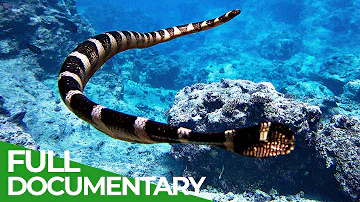
Sea of Snakes - In the Realm of the Deadly Niue Sea Krait | Free Documentary Nature
Sea of Snakes - In the Realm of the Deadly Niue Sea Krait | Wildlife Documentary Watch 'Adventure Ocean Quest: Discovering ...
Free Documentary - Nature

From Sea Snakes To Parrotfish: Life on Indonesia's Equatorial Reefs | All Out Wildlife
In Indonesia's equatorial waters, life thrives among vibrant coral reefs. These reefs host an astonishing array of fish species; with ...
All Out Wildlife
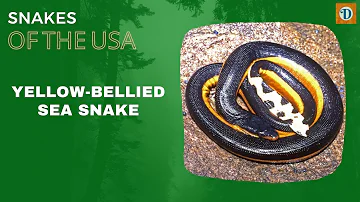
YELLOW BELLIED #sea #snake | Fascinating and Elusive
Welcome to our YouTube video about the fascinating and elusive Yellow Bellied Sea Snake! These serpents are found in the ...
Discover
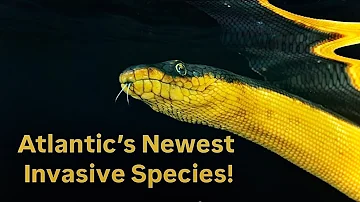
Venomous Sea Snakes Taking Over The Atlantic!
Despite not being native, invasive venomous sea snakes have been being reported across the Atlantic. Both the yellow bellied ...
GavinTheWildlifeGuy
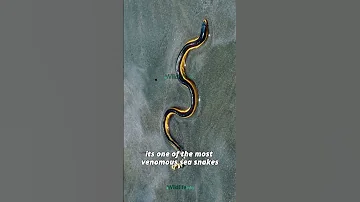
The Ocean's Hidden Deadly Wonder
Dive into the deep blue ocean and encounter the mesmerizing world of the Yellow-Bellied Sea Snake, a true marvel of marine life.
Wildlifeinfo

snake bite man shorts #youtubeshorts #wildlife #animals #trendingreels #viralreels
Big animal snake #shorts #youtubeshorts #wildlife #animals #trendingreels #viralreels snake,snakes,animals,giant snake,snake ...
Vikas Thakur YouTuber
🌍Habitat Information
The Yellow-bellied Sea Snake typically inhabits Open ocean (pelagic zones) environments. Yellow-bellied Sea Snakes have adapted to their environments with specialized features and behaviors.
Primary Habitat:
Open ocean (pelagic zones)
More detailed habitat information will be available soon.
🛡️Conservation Status
The Yellow-bellied Sea Snake is currently classified as Least Concern. Conservation efforts are crucial for preserving this species for future generations.
Common Threats:
- 🏠Habitat loss and fragmentation
- 🌡️Climate change impacts
- 🎯Hunting and poaching
- 🏭Human-wildlife conflict
⚠️Threats & Conservation Challenges
Currently listed as Least Concern by the IUCN, the Yellow-bellied Sea Snake faces few natural predators, though large fish, birds, and marine mammals may occasionally prey on it. Its remote, pelagic habitat insulates it from most direct human impacts, but it is susceptible to bycatch in commercial fisheries and accidental stranding during storms or El Niño events. Climate change poses emerging threats, including shifts in ocean currents, temperature, and prey distribution. Plastic pollution and oil spills may also impact populations, though the extent is not well quantified. Population trends are generally stable, but localized declines may occur due to environmental disturbances.
🔬Scientific Classification
Scientific Name
Hydrophis platurus
Classification Hierarchy
🔍 About Taxonomic Classification
Taxonomic classification is a hierarchical system used by scientists to classify and organize living organisms based on shared characteristics and evolutionary relationships.
The system moves from broad categories (Kingdom) to increasingly specific ones, with each animal's scientific name typically consisting of its Genus and species.
📝Community Notes
Share your observations and insights about the Yellow-bellied Sea Snake with our community of wildlife enthusiasts.
Join Our Community
Sign in to share your observations and connect with fellow wildlife enthusiasts.
Sign In to ContributeNo community notes yet
Be the first to share your observations about the Yellow-bellied Sea Snake!
Explore Yellow-bellied Sea Snake
Select a tab above to learn more about this amazing animal.
📸Photo Gallery
No photos available for this animal yet.
🌟Discover More Wildlife
Continue your journey of discovery with more fascinating animals from our database
